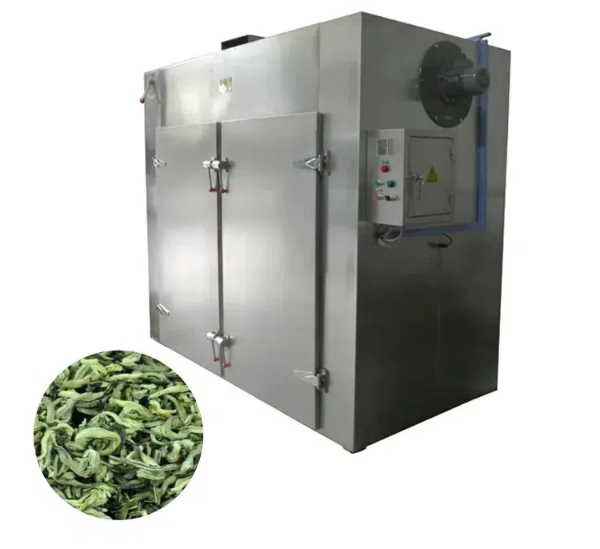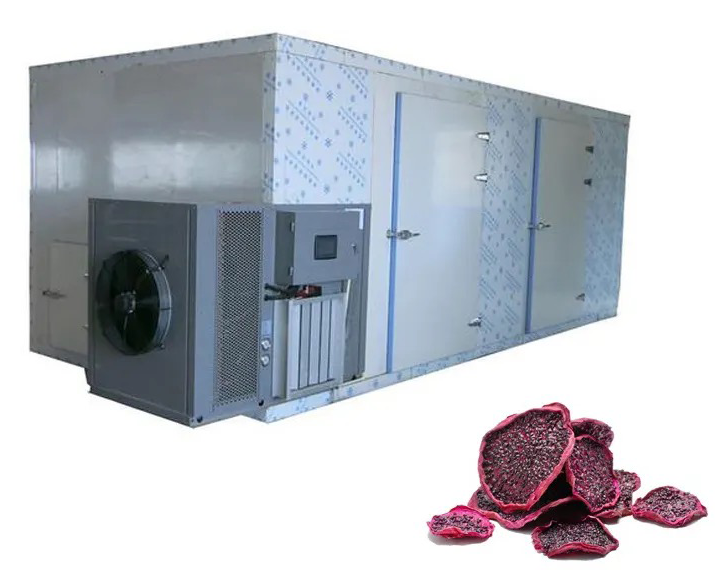
Content Menu
● Introduction to Food Drying Machines
>> Types of Food Drying Machines
● Safety Considerations for Room Type Drying Machines
>> Electrical Safety
>> Fire Prevention
>> Operator Safety
>> Maintenance and Inspection
● Potential Hazards and Mitigation Strategies
>> Combustible Dust
>> Overheating
>> Mechanical Failures
● Advanced Safety Technologies
>> Automation and Monitoring Systems
>> Safety Sensors and Alarms
● Best Practices for Safe Operation
>> Pre-Operation Checks
>> Continuous Training
>> Collaboration with Regulatory Bodies
● Conclusion
● FAQ
>> 1. What are the key safety considerations for room type drying machines?
>> 2. How often should I inspect and maintain my food drying machine?
>> 3. What are the risks associated with combustible dust in food drying machines?
>> 4. What personal protective equipment (PPE) should operators wear when using food drying machines?
>> 5. How can I ensure proper ventilation in the room where the drying machine is located?
● Citations:
As a leading Chinese manufacturer of food drying machines, we provide OEM services to international food drying machine brands, wholesalers, and manufacturers. In this article, we will delve into the safety considerations for room type drying machines, focusing on their operation, maintenance, and potential hazards.

Introduction to Food Drying Machines
Food drying machines are essential in the food processing industry, used for preserving fruits, vegetables, meats, and other food products by removing moisture. These machines can be categorized into different types, including tray dryers, tunnel dryers, and fluidized bed dryers. Each type has its unique features and safety considerations.
Types of Food Drying Machines
1. Tray Dryers: These are simple and commonly used for small-scale operations. They consist of trays where food is placed, and hot air is circulated to dry the food.
2. Tunnel Dryers: These are used for large-scale operations, where food is placed on carts and moved through a tunnel with hot air circulation.
3. Fluidized Bed Dryers: These are used for drying smaller food particles by blowing air from underneath, creating a fluidized state.
Safety Considerations for Room Type Drying Machines
Electrical Safety
- Grounding: Ensure the machine's cabinet is well grounded to prevent electrical shocks.
- Inspection: Regularly inspect electrical connections and switches for any damage or wear.
- Certification: Ensure that all electrical components meet local safety standards and are certified by relevant authorities.
Fire Prevention
- Flammable Materials: Avoid placing flammable materials near the dryer.
- Ventilation: Ensure proper ventilation in the room to prevent accumulation of flammable vapors.
- Fire Suppression System: Install a fire suppression system to quickly respond to emergencies.
- Regular Cleaning: Regularly clean the drying area and surrounding surfaces to prevent dust buildup.
Operator Safety
- Training: Provide operators with comprehensive training on machine operation and safety procedures.
- Personal Protective Equipment (PPE): Ensure operators wear safety goggles and heat-resistant clothing.
- Emergency Procedures: Establish clear emergency procedures for operators to follow in case of accidents.
Maintenance and Inspection
- Regular Checks: Regularly inspect moving parts, bearings, and conveyor belts for damage.
- Lubrication: Maintain lubrication of moving parts to prevent overheating and wear.
- Record Keeping: Keep detailed records of maintenance and inspections to track machine performance and identify potential issues early.
Potential Hazards and Mitigation Strategies
Combustible Dust
- Risk: Combustible dust can lead to explosions, especially in dryers handling powders.
- Mitigation: Implement NFPA standards for explosion prevention and ensure regular cleaning of dust accumulation. Use dust collection systems to minimize airborne dust.
Overheating
- Risk: Overheating can cause fires or damage to the machine.
- Mitigation: Monitor temperature controls and ensure proper airflow to prevent overheating. Regularly check heating elements for damage or wear.
Mechanical Failures
- Risk: Mechanical failures can lead to accidents or downtime.
- Mitigation: Regular maintenance and replacement of worn parts can prevent mechanical failures. Implement predictive maintenance techniques using sensors to monitor machine performance.

Advanced Safety Technologies
Automation and Monitoring Systems
- Real-time Monitoring: Implement real-time monitoring systems to track machine performance, temperature, and humidity levels.
- Automated Controls: Use automated controls to adjust drying conditions based on real-time data, ensuring optimal drying while minimizing risks.
Safety Sensors and Alarms
- Temperature Sensors: Install temperature sensors to detect overheating and trigger alarms.
- Smoke Detectors: Use smoke detectors to quickly identify potential fires and activate fire suppression systems.
Best Practices for Safe Operation
Pre-Operation Checks
- Conduct thorough checks of the machine before each use to ensure all safety features are functioning correctly.
- Verify that all operators are trained and aware of safety procedures.
Continuous Training
- Provide ongoing training for operators to stay updated on new safety protocols and machine features.
- Encourage a culture of safety awareness among all personnel involved in the operation.
Collaboration with Regulatory Bodies
- Work closely with local regulatory bodies to ensure compliance with safety standards and regulations.
- Participate in industry forums to stay informed about best practices and emerging safety technologies.
Conclusion
Room type drying machines are crucial in the food processing industry, but they also pose significant safety risks if not properly managed. By understanding the types of drying machines, adhering to safety protocols, and implementing regular maintenance, these risks can be mitigated. It is essential for manufacturers and operators to prioritize safety to ensure efficient and safe operation of these machines.

FAQ
1. What are the key safety considerations for room type drying machines?
Answer: Key safety considerations include electrical safety, fire prevention, operator safety, and regular maintenance to prevent mechanical failures and combustible dust explosions.
2. How often should I inspect and maintain my food drying machine?
Answer: Regular inspections should be conducted daily or weekly, focusing on moving parts and electrical connections. Maintenance should be scheduled based on the manufacturer's guidelines, typically every few months.
3. What are the risks associated with combustible dust in food drying machines?
Answer: Combustible dust can lead to explosions, especially in confined spaces like drying chambers. Regular cleaning and adherence to NFPA standards are crucial for mitigation.
4. What personal protective equipment (PPE) should operators wear when using food drying machines?
Answer: Operators should wear safety goggles and heat-resistant clothing to protect against heat and potential chemical exposure.
5. How can I ensure proper ventilation in the room where the drying machine is located?
Answer: Ensure that the room has adequate ventilation systems to remove flammable vapors and prevent accumulation of dust. Regularly inspect ventilation systems to ensure they are functioning correctly.
Citations:
[1] https://www.rxpelletmachine.com/info/how-to-use-food-dryers-safely-61065506.html
[2] https://www.chinagrainmachine.com/news/precautions-for-using-food-dryer-65235851.html
[3] https://www.tcpel.com/industrial-food-dryer-the-ultimate-guide/
[4] https://www.alamy.com/stock-photo/drying-machine.html
[5] https://www.youtube.com/watch?v=A5Nf2P7-nbU
[6] https://www.youtube.com/watch?v=BjTUR5S9aEs
[7] https://sigma-hse.com/news-insights/mitigating-risk-for-dryers/
[8] https://sosfoodlab.com/canning-foods-and-dehydrating-foods-safety-dos-and-donts/
[9] https://www.dryeratech.com/storing-dried-foods-best-practices-after-using-your-machine.html
[10] https://www.cfs.gov.hk/english/programme/programme_haccp/files/Food_Safety_Guidelines_for_Food_Recovery_e.pdf
[11] https://www.istockphoto.com/photos/food-dryer
[12] https://www.youtube.com/watch?v=Zl4wTcCPJu0
[13] https://www.shutterstock.com/search/dehydrator-machine
[14] https://www.youtube.com/watch?v=rR2G5UO-5Ms
[15] https://www.istockphoto.com/photos/food-dehydrator
[16] https://www.valmet.com/insights/articles/up-and-running/reliability/DryerInspectionGuide/
[17] https://www.valmet.com/insights/articles/up-and-running/reliability/RTDryerSafety/
[18] https://www.webstaurantstore.com/documents/pdf/554bsd_manual.pdf
[19] https://www.foodsafetynews.com/2025/02/at-home-freeze-drying-a-growing-trend-with-food-safety-concerns/
[20] https://www.youtube.com/watch?v=AUBGRjnL_vQ
[21] https://www.youtube.com/watch?v=Z9KWJfxmziU











